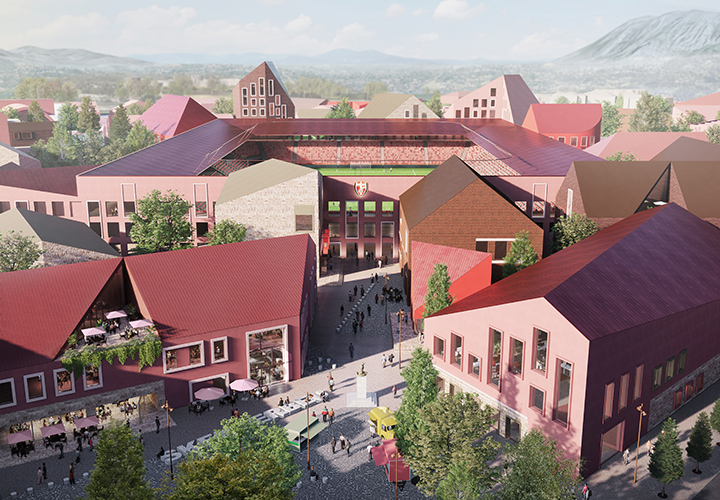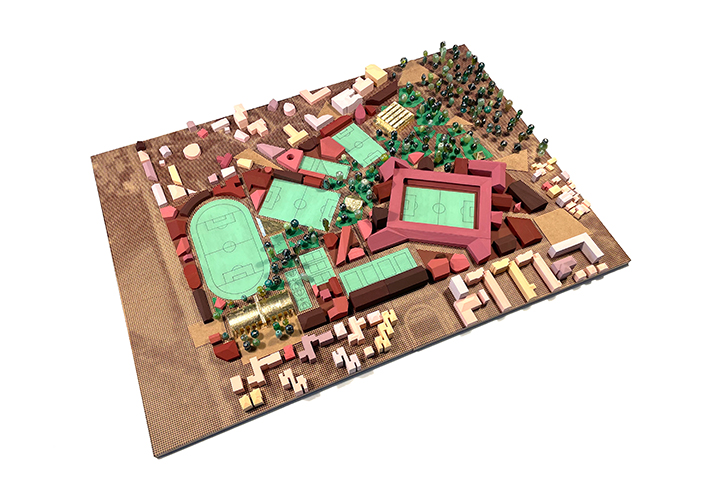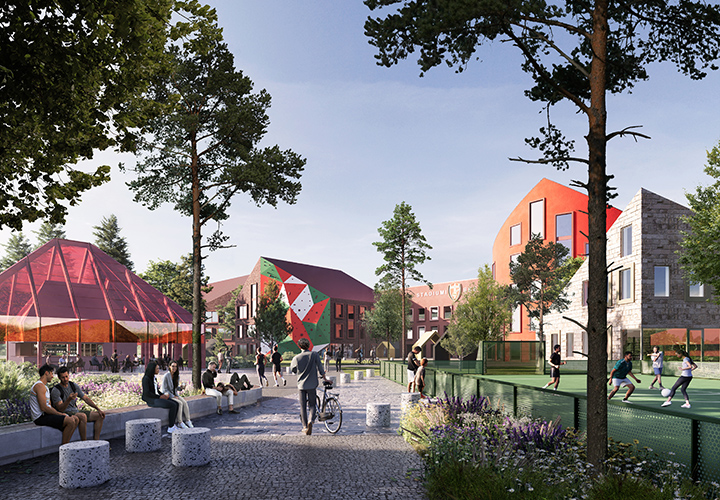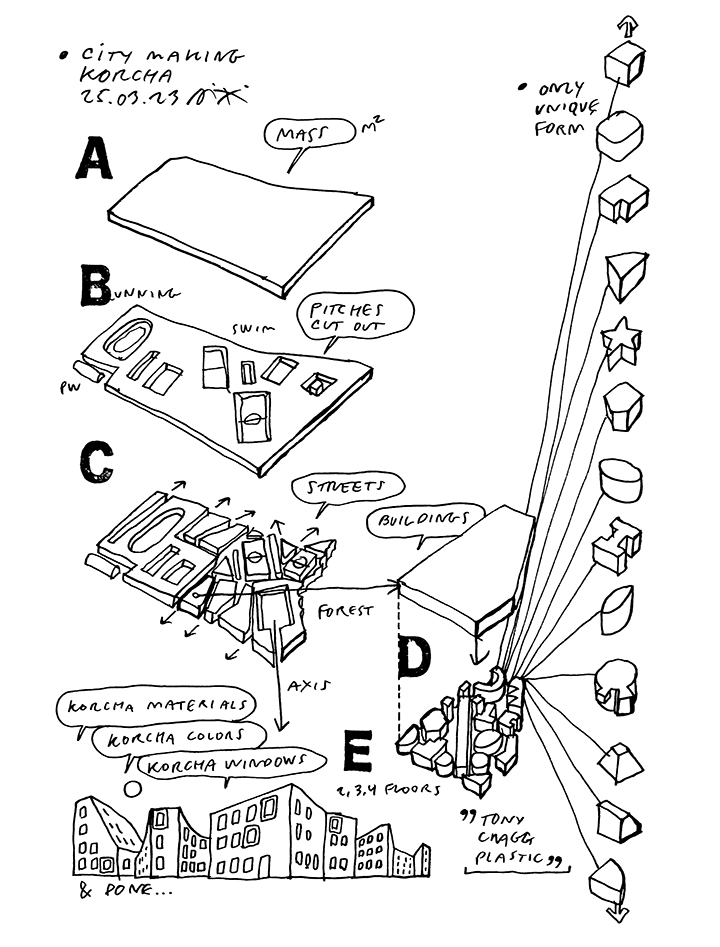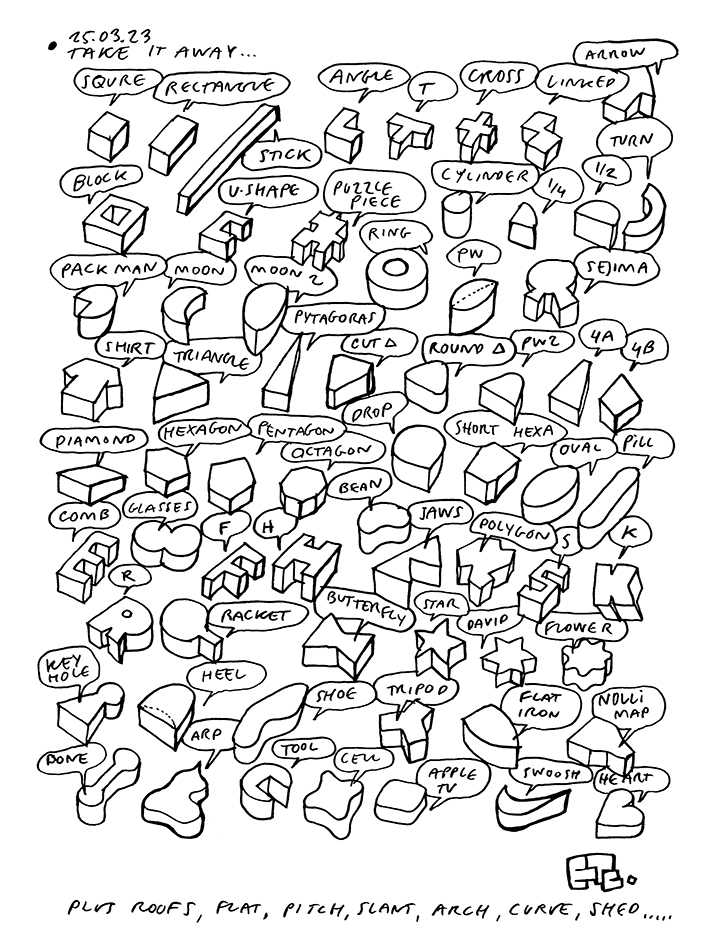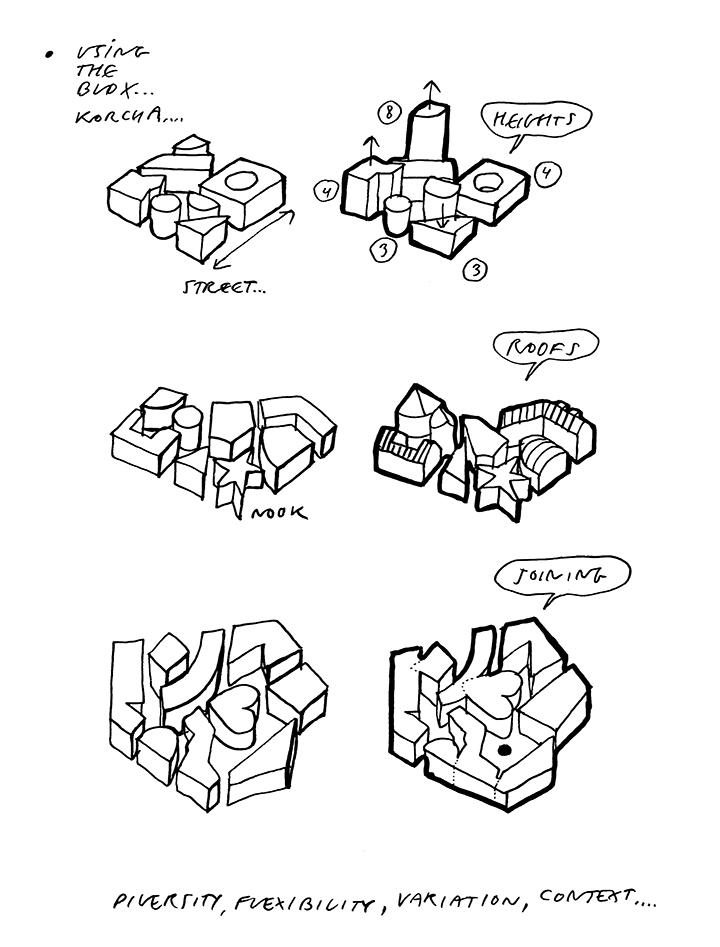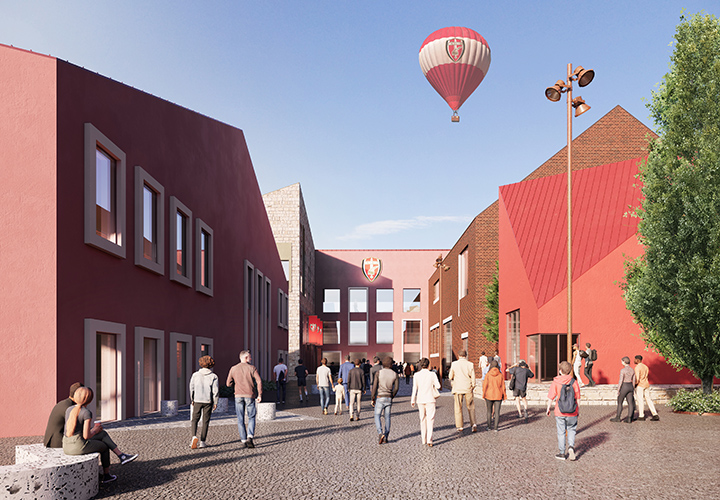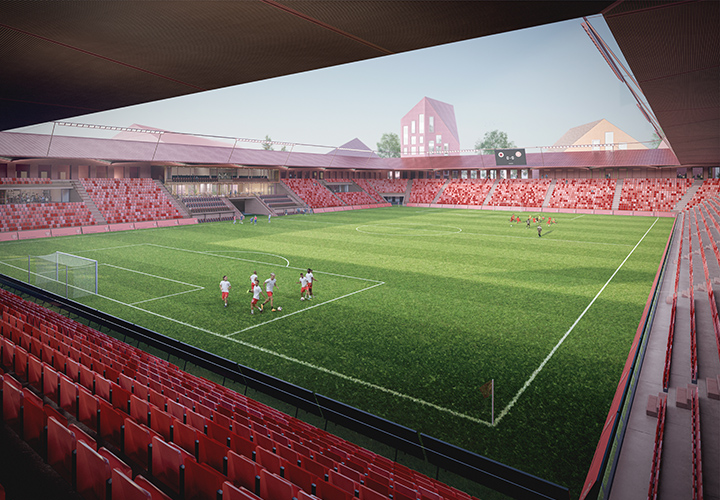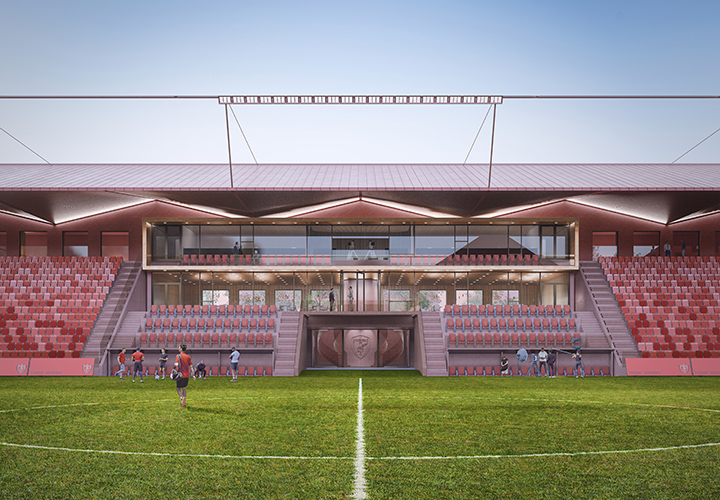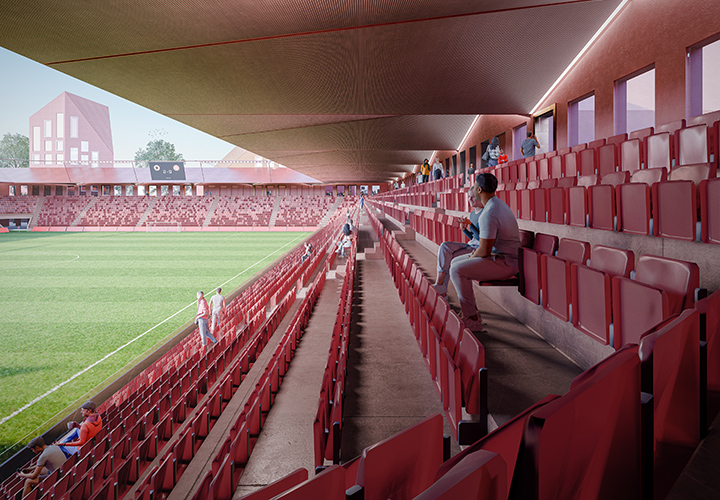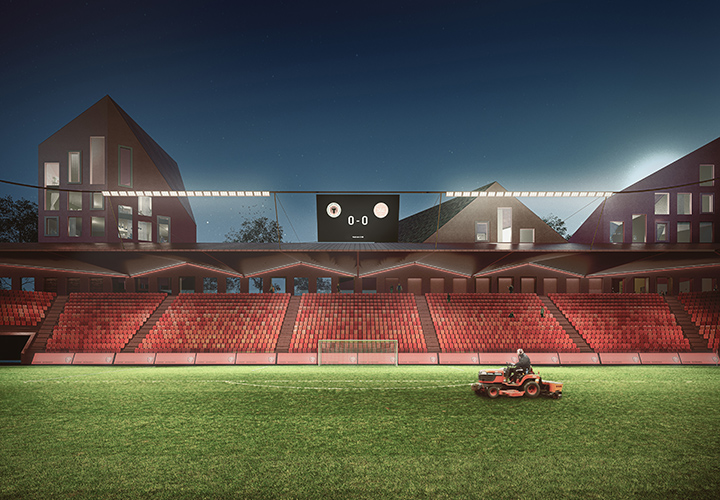NEW SKENDERBEU STADIUM
- LOCATION: KORÇA, ALBANIA
- CLIENT: THE NATIONAL PLANNING AGENCY – THE MINISTRY OF EDUCATION AND SPORTS
- FUNCTION: MIXED USE
- SIZE: 85,000 M2
- YEAR: 2023-
- STATUS: ONGOING
- ARCHITECT: CEBRA. UNO ARCHITECTS
- ARTIST: NAXHI BAKALLI
- BUILDING ESTIMATOR: ELVIS UKU
- ENGINEER: ARUP
With a capacity of 10,000 seats, the new stadium with club-coloured red seats will hold great excitement on match days when fans can support the club from the grandstands. As part of the redevelopment design of the existing football stadium, CEBRA has designed a master plan for developing a vibrant neighbourhood around the new Skenderbeu Stadium. Buildings and alleys inspired by the Korça typologies will create a familiar cultural experience visible from both inside and outside the stadium.
A neighbourhood stadium
Traditionally, due to its size and usage, a stadium is placed by itself surrounded by parking. Instead, CEBRA’s design extends the Parku Rinia public park and the built environment around the stadium to connect vibrant city life to the arena complex. You will even see buildings shoot up over the arena roof.
To respect the history of the entire plot, the fields and pitches stay where they are. CEBRA plans to extend the park across the Bulevardi Rilindasit and through the plot to form a green and shaded space at the very centre of the site. In the proposed master plan, the building mass is divided into city blocks as the proposal extends adjacent streets from the surrounding neighbourhoods into the area. Each block should then be filled with individual buildings of varying sizes and functions. Thus, new streets and alleys are formed that will lead through the neighbourhood and right to the arena. Moreover, surrounding buildings will shoot up over the arena roof.
New facilities create an active park and urban community
Besides the new Skenderbeu Stadium, the 158,000 m2 site holds an existing athletic games training area, football pitches and smaller courts, a new Olympic pool, indoor court facilities, and accommodation. Moreover, a new plaza welcomes the arena guests as an arrival square close to the entrance of the stadium, where a bust of the national hero Skenderbeu remains.
The proposal adds a new restaurant at the centre of the park, as well as a pink pavilion coffee stand for the local football team supporters, to the existing beacons of the Kids Museum, the triangular seating bank and the Tamara Nikolla Sports Palace. To create a lively urban hub, suitable for both cultural events and daily living for residents in the district, shops, family housing, day-care centres, sports museums, pubs and restaurants, and supermarkets can contribute to supporting vibrant city life for families, supporters, tourists, and young adults.
Catches Korça’s DNA
To fit into the context of Korça and only subtly add contemporary traits, the Danish studio has carefully studied particularly the old part of town and noted the most significant characteristics. Based on this morphological analysis of the Korça typologies, the neighbourhood will consist mainly of two to four-floored buildings and an environment that is rich in variation, unique shapes, and irregular urban spaces. The city blocks and the streets between them will be irregular, making the urban spaces diverse. Based on the Korça typologies, most buildings are rendered or stone-based and have red, hip roofs in many variations.
Read more
ArchDaily
Other projects in Albania by CEBRA
Mount Tirana

